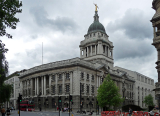
The UK government has announced an ambitious target of welcoming 50 million international visitors annually by 2030, reinforcing its status as one of the world’s top travel destinations while
driving economic growth.
In a keynote address at the Tourism Alliance conference in London on November 26, Tourism Minister Sir Chris Bryant outlined a comprehensive plan to position tourism as a central pillar of the nation’s economic strategy. The sector, currently valued at £74 billion and contributing 4% to the UK’s Gross Value Added (GVA), has vast potential for further expansion.
Key initiatives announced
1. Visitor Economy Advisory Council:
A new council, co-chaired by Sir Chris Bryant, will foster collaboration between the government and industry leaders. It will spearhead the development of a National Visitor Economy Strategy, set to launch next autumn, outlining actionable steps to support tourism growth.
2. Focus Beyond London:
While London remains a major draw for international tourists, the strategy aims to boost visits to other regions. Enhanced marketing, reformed tourist boards, targeted skill development, and celebrating the UK’s rich cultural heritage will underpin efforts to diversify tourism.
3. Improving Visitor Experience:
A “holistic” approach to tourism will prioritize seamless experiences for visitors, encompassing airport arrivals, event tickets, accommodation, and transport. This integrated strategy aims to make the UK more accessible and appealing, fostering repeat visits and stronger regional economies.
4. Support for the Tourism Sector:
The government is committed to transforming local visitor boards through the Local Visitor Economy Partnership (LVEP) programme, with 35 partnerships already accredited. Additionally, a short-term lets registration scheme is in development to enhance accommodation standards while safeguarding affordable housing.
5. International Collaboration:
To support outbound travel, the Visitor Economy Advisory Council will address initiatives such as the EU Entry Exit system and eGate access for British travelers, ensuring smooth travel experiences abroad.
In 2022, the UK welcomed 38 million visitors, a recovery from the pandemic but still below the pre-2019 high of 41 million. With a target of 50 million annual visitors by 2030, the government is focused on unlocking the untapped potential of the tourism industry.
Speaking at the conference, Sir Chris Bryant emphasized the importance of collective efforts between the government and industry:
“I am passionate about making the UK a top visitor destination that truly rivals our European counterparts.
But we can only do that if we work together. We need a true partnership between the government and the sector to deliver such growth.
We all know that London is great - one of the best cities in the world. But too many visitors only go to London - in fact when asked by VisitBritain, 57 per cent of visitors could not imagine what there was in the UK outside of London.
We need to complement London and Edinburgh with stronger regional destinations - where people visit in their own right and stay and spend money because they know about the full range of attractions at those destinations - the heritage, the arts, the music, the pubs and restaurants.
Too many of my predecessors have seen tourism as a nice thing to have and not a priority. I don’t. I see it as an essential part of our economy, worth £74 billion and 4 per cent of GVA with a huge potential for growth.
We are good at this and can be even better if we work together. I want us to have a ‘holistic’ approach to tourism where we will be looking at every element from a visitor’s arrival at the airport to buying a ticket for a music gig or finding a restaurant or catching a train”.
“Tourism isn’t just a ‘nice to have’—it’s an essential part of our economy, worth £74 billion. While London is one of the best cities in the world, too many visitors overlook what the rest of the UK has to offer. We need stronger regional destinations that can stand alongside London and Edinburgh, showcasing our heritage, arts, music, and more.” Photo by DAVID ILIFF. License: CC BY-SA 3.0", Wikimedia commons.



































